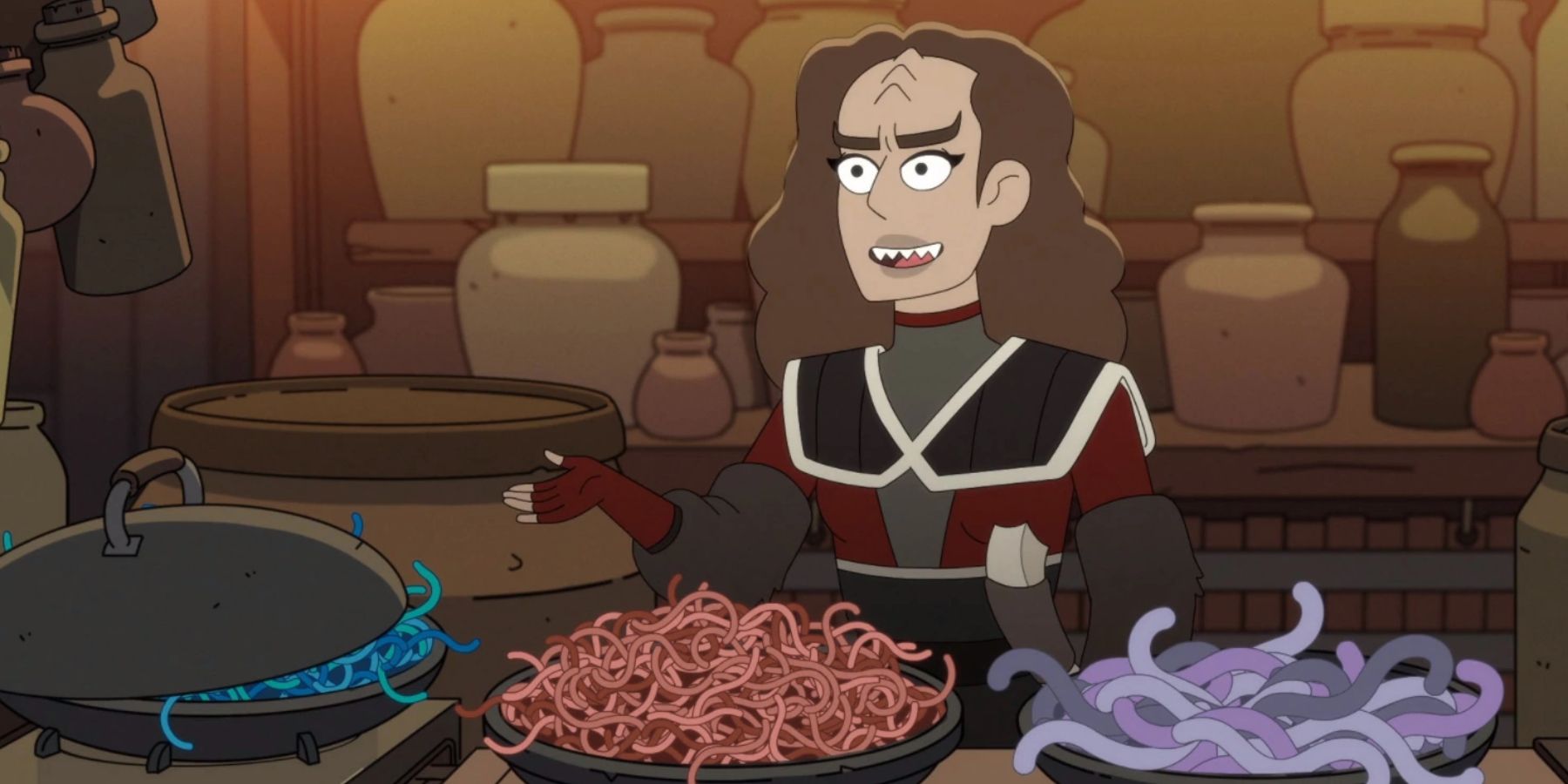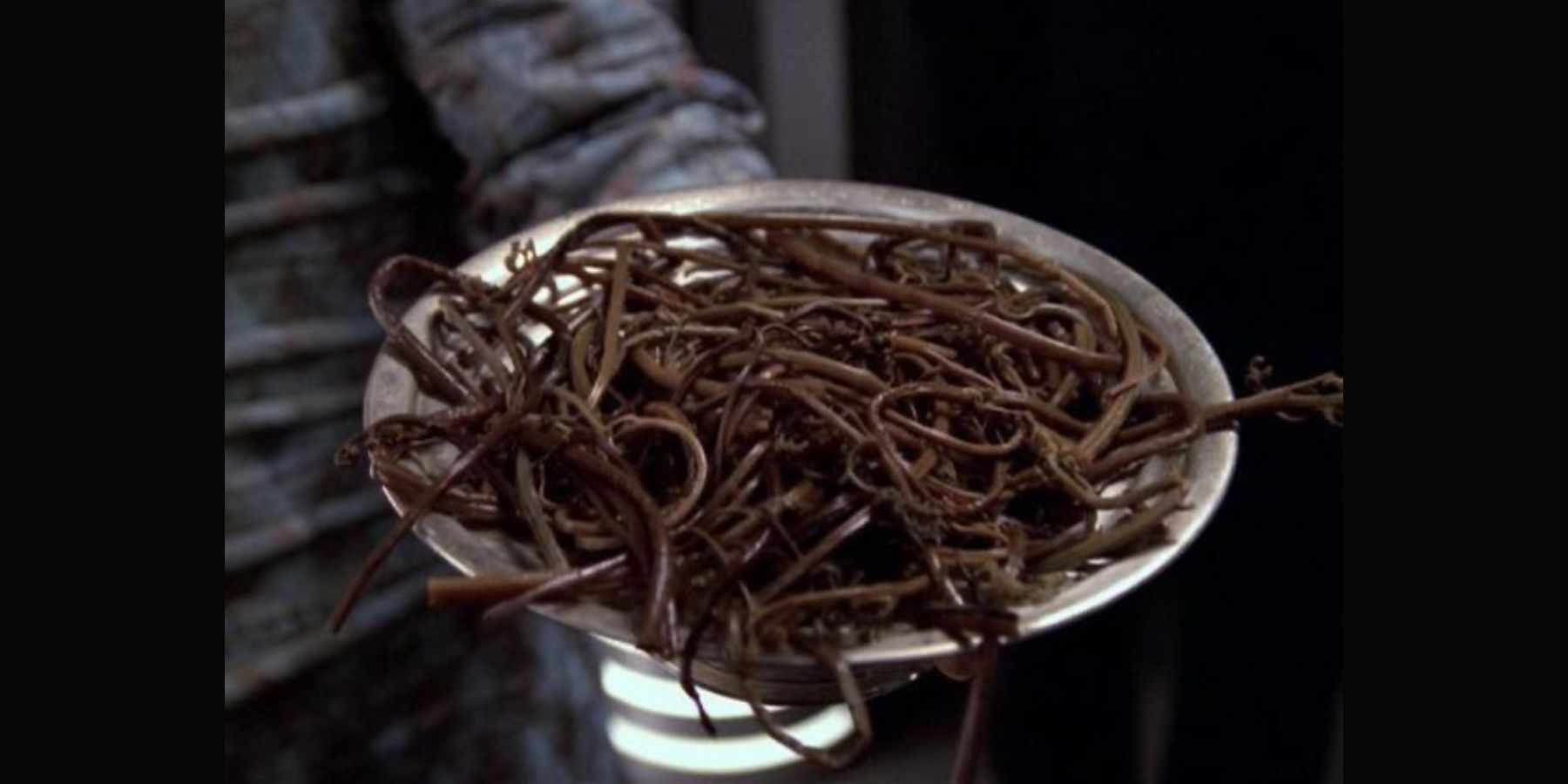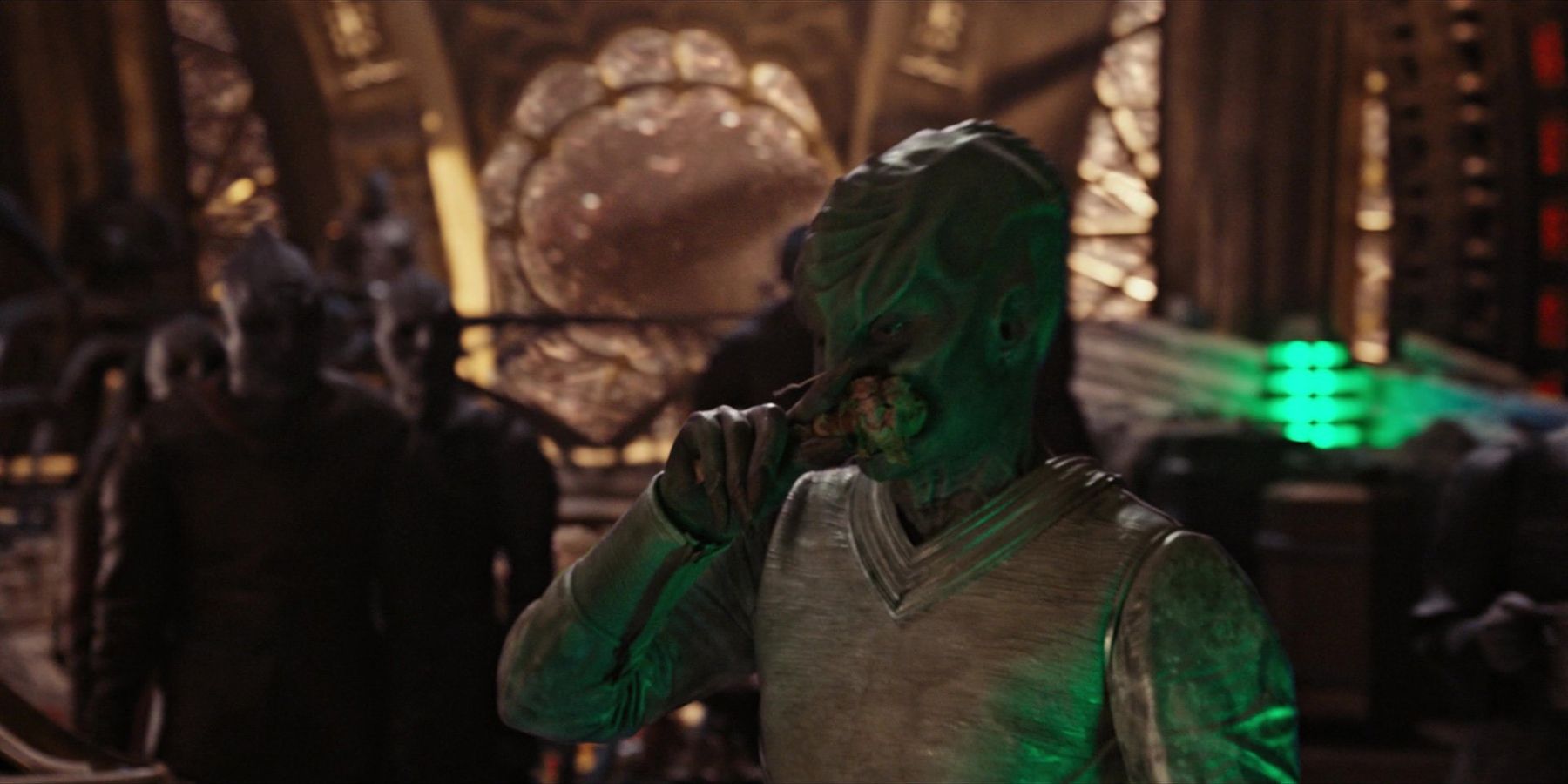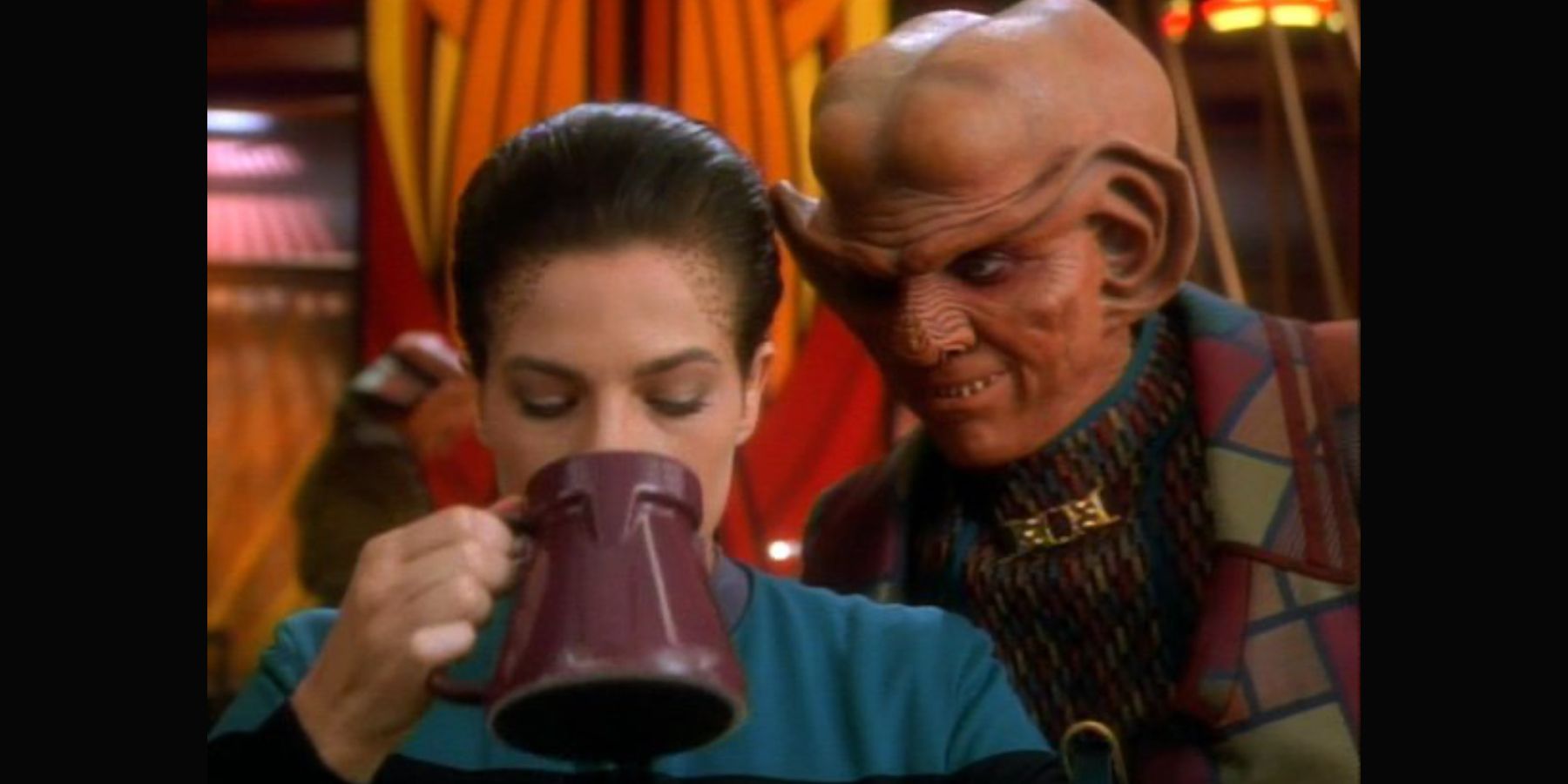The ever-expanding universe of Star Trek is famously groundbreaking, and fundamental to the development of science fiction TV shows. One thing that makes it special in this way is the incredible attention to detail the show's creators had. They created deeply complex socio-political cultures, vast histories for various alien races and civilizations, and tactically intricate Starfleet training programs.
One thing that resonated throughout the franchise is their attention detail with culture, such as the vastly different cuisines found within the various different races. Among these, potentially none are so memorable and diverse as the Klingon cuisine. What wild and wonderful oddities these warmongering, forehead-ridged people enjoy so much?
Klingon Alcohol
There's one thing that often defines these warring, aggressive balls of muscle, and acts as a strong parallel between them and the Viking culture they were based on: their consumption of alcohol. Potentially the most famous of these beverages is bloodwine, talked about throughout the various iterations into the franchise. This is the Klingon empire's favored drink of choice. Like most Klingon cuisine, bloodwine is not for the faint of heart. It is a very alcoholic, non-bubbly drink that is famously ambiguous about whether it actually contains blood or not. It is best served warm, and is apparently so intoxicating (twice as strong as whiskey) that the majority of non-Klingons are not able to tolerate it.
Another strong beverage is Chech’tluth, which represents the Klingon version of a spirit. This whiskey adjacent drink smokes due to its potency, and despite its strength, it often enjoyed by humans who desire something strong. There is also Warnog, a traditional Klingon beer enjoyed notably by General Martok aboard the IKS Rotarran, a clear beverage that is served warm. Its name is interesting, and it’s not clear whether this is a Klingon word, or an English amalgamation of War and Nog, meaning a war drink.
Gagh
One of the most famous foods eaten by Klingon and brave others is the delicacy of Gagh (or ‘Hot Worms’ as Ensign Mariner would say). This meal is made from serpent worms found on the Klingon home world. It’s a meal loved by seemingly all Klingons, one that can be served cold or in a stew, but is widely thought to taste better while eaten live. Keeping these creatures alive in the depths of space is no easy task, however. They require a consistent supply of blood to live, and have to be fed throughout whatever voyage they are on. One of the worst jobs aboard a Klingon vessel is the scrapping out of the worm barrels, deemed necessary in order for the consumption of the live worms.
Many non Klingons find the dish to be repulsive. In the Voyager series, Neelix attempts to serve it as a part of a Klingon breakfast buffet, with little appeal to the crew. However, a few notable humans have developed a taste for the wriggling dish. Picard and Riker of TNG, as well as Dr. Bashir from DS9, have all noted a love for the meal.
While they may all look the same, there are actually a whopping 51 different types of Gagh, each with its own distinctive taste and texture. The ones noted in canon are: Bithool (which have feet), Filden (which squirms a lot more), Meshta (which jumps), Torgud (which wiggles), and Wistan (which is stored in barrels of Targ blood). Racht is fairly similar to Gagh, but is larger. Also, while Gagh can be eaten cold, it is an absolute necessity to eat Racht fresh and alive, as noted in the DS9 episode “Melora” by Dr. Bashir’s love interest Melora Pazlar: “There’s nothing worse than half-dead Racht.”
Krada
While the Gagh and Racht look rather unappealing to non-Klingons, the Krada leg seems much more appetizing (except to vegetarian Vulcans). It's reminiscent of any generic leg of meat, but most with a few more spikes. The Krada itself is never shown in canon, only ever referred to in passing, until Discovery where L’Rell is shown devouring a leg as part of a great feast. It’s never mentioned specifically in the episode that this is Krada, but the actress Mary Chieffo confirmed during an After Trek episode that this was in fact the never-before-seen Klingon Krada.
The Krada originates from Klingon space, and is served as a staple at the Klingon restaurant aboard the Deep Space 9 station, where Kira and the station security officer Odo often take their lunch breaks. It also makes an appearance in the background of a Lower Decks episode, in the form of a kiosk named Mr. Krada Leg — which is manned, interestingly, by a Gorn.
Raktajino
This beverage has long been yearned for by Star Trek fans who have to wake up early. It's a strong brew of Klingon coffee, and can be served hot or iced. The Raktajino is referenced by various characters throughout the franchise. It's often used in place of normal human coffee to give officers an edge when working overtime, like Engineer Reno during Discovery. Reno sums it up perfectly by saying: “When you have to power through, nothing beats the bitter elixir of Klingon warriors.”
Raktajino is also the favored way to wake up the morally ambiguous Captain Sisko, who needed it to function each morning, often mixing it with jacarine peel, an alien fruit. While the drink is specifically designed for its high caffeine content, the station's second-favorite Ferengi, Quark, created a decaffeinated version for the pregnant Kira Nerys, a drink Odo gave the name Quarktajino.
Klingon food has always been a fascination of the franchise, the creators carving out considerable time to design it, and many more, cuisines of the mighty empire. While many dishes seem unappealing to audiences, drinking warm blood and eating still-living worms, the fact that there are many humans across the franchise that enjoy these things shows that there must be something about them that keeps them coming back for more.





